我們都聽說過,地球是在掙紮to keep up with human demands. The pressure on Earth’s resources and habitats is ever-increasing and is leading us into ecosystem collapse and possible climatic catastrophe.
Ourenergy consumptionis a big part of that picture – in 2018, electric energy production accounted for26.9 percent of all greenhouse gas emissions.
At the same time, many people are struggling to make ends meet, especially in times of a looming economic crisis.
However, many are not aware that they could save some money by making their homes as energy-efficient as possible.
Although increasing energy efficiency does require initial spending, it quickly pays off through the savings you will make on your bills.
In this article, first, we will have an overview ofhousehold energy-saving tipsby analyzing the groups of home elements and appliances, their role in using up energy, and the ways to lessen their energy footprint.
Then, we are going virtually through the entire house to share additionalroom-specific tips for energy saving.
In This Article
Air Conditioning
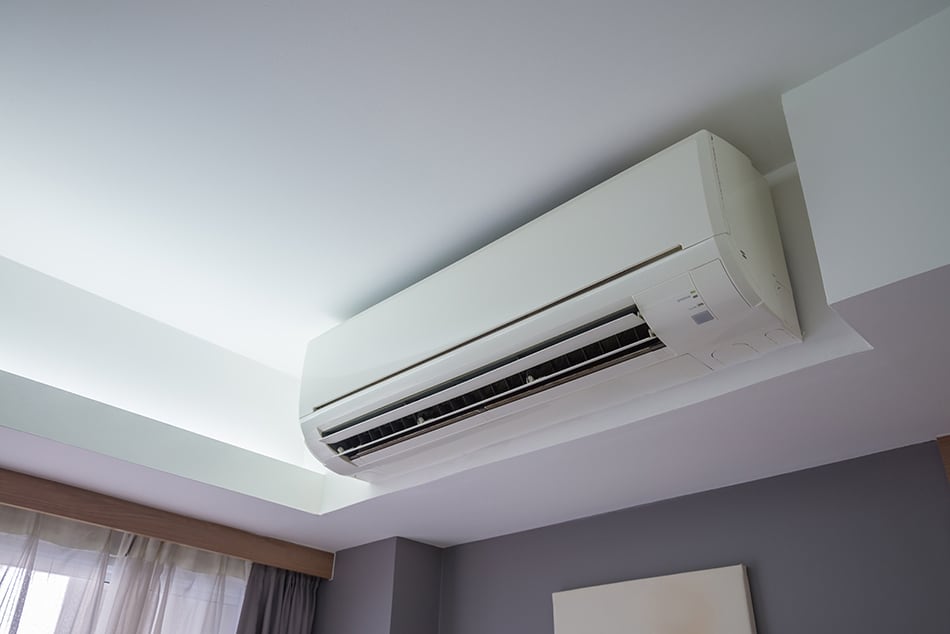
Air Conditioningregulates heating and cooling of your home. In the times of climate change and weather turbulences, it may be tempting to use it more.
The other thing might be that we got a bit spoiled. In the United Kingdom, it is estimated that today, homes are heated toat least 4 degrees C warmerthan in the 1970s, which adds up to a massive energy use increase. We seem to be keener to spend the winter in short sleeves than get a sweater and save some energy.
The International Energy Agency assessedthat the increasing global use ofair conditioners in homes and officesis becoming and will be one of the main drivers of the increasing global electricity use in the next three decades.
Fortunately, the AC is easily controlled via thethermostat– the only thing that matters is how we set it. The recommended heating and cooling scheme goes like this:
- In the winter,68F, or 20-21 degrees Celsiusis considered anoptimal temperature.
- When you are away from home or sleeping, you can set it to an even lower temperature of between60 and 68F (15-19°C).
- Besides saving energy,cooler bedrooms in the winter can be beneficial for your healthand can even help people beat insomnia.
- During the summer, there are two recommendations. One is to keep the indoor temperatureno more than 3-4 degrees C cooler than outside. That is the best way to save your cardiovascular system from shock when moving from outside to inside the environment and vice-versa.
- However, in extreme heat, that last piece of advice is not really practical. Then it is recommended to set the thermostat to78°F (26°C) – or as high as comfortable.
- Controlling humidity isalso beneficial if possible since high humidity makes it harder for the body to cool off naturally.
- In the summer, in the time of day when the sun is hitting your windows directly,pull the blinds down.
- Keep the AC ononly when you are at home. Programmable thermometers allow you to set the cooling or heating to turn on just prior to your arrival to your house instead of keeping it on the whole day.
- Consider turning on asimple fan insteadof the AC when the temperatures are not too high, but you need just a little bit of cooling and air circulation to get comfortable.
- Theenergy efficiencyof the AC system itself is also important. Look to replace the old AC systems with newer ones with a favorable Energy Star or comparable efficiency rating.
Lighting

When looking at those tiny light bulbs, it is hard to imagine how lighting can eat up energy in a household.
If we look at the statistics, lighting accounts for5 percentof household energy use. That may not seem like much, but it is more than freezers, cooking, clothes washers, and dishwasherscombined!
When the incandescent and halogen bulbs dominated our homes, it was quite challenging to curb the lighting energy use. However, things have changed massively with compact fluorescents, and especially withLED lightingbecoming widely available
LED lightsuse 75 percent less energythan incandescent lights, which is quite impressive. In other words (and units), to create the light output of a 50-watt incandescent, you need a LED bulb that uses only11-12 watts.
While the first days of LED lighting were not all glory, because of the unnatural bluish hue emitted by LEDs, things have changed considerably. Now you can easily find LED lights that are within the warm light spectrum, similar to incandescents.
Here are concrete tips to reduce lighting expenses.
- Switch to LED lighting.Immediately! While your budget will feel the initial investment, it will pay off very quickly through the reduced energy bills.
- Make maximal use ofnatural lighting. In the morning, raise all the blinds instead of impulsively turning on the lights.
- Remember toturn the lights off whenyou are not around.
- If you are really forgetful about lights, you can installmovement sensors whereapplicable, to turn the lights on and off as you leave or enter the room.
- Consider installinglight dimmerswhere practical. This will help you save energy by decreasing the output (and therefore energy consumption) of your light bulbs. Besides, being able to control the brightness can be really satisfying and increase the quality of your indoor time – especially if you get frustrated by bright lights.
- Do not leave the light on yourporch turnedon all night by default. By doing this, not only do you save energy, but you reduce light pollution, saving many insects from death, and also saving astronomy enthusiasts from annoyance. Perhaps someone in the next yard is trying to do some stargazing, and your porch light is killing his view.
Appliances
Laundry Washing Machine
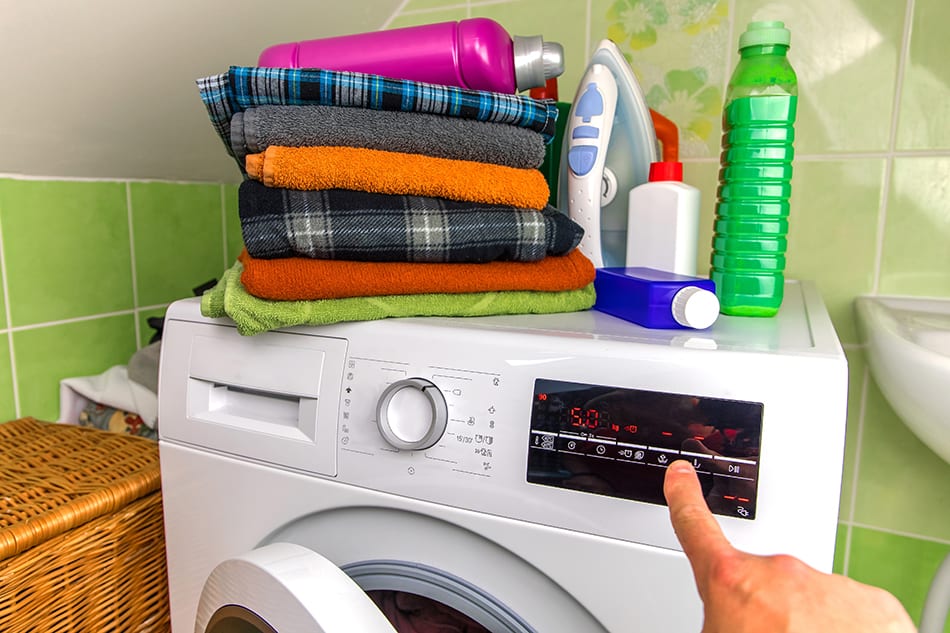
Thelaundry-washing machineis a modern necessity and one invention that has immensely increased the quality of life for people, and especially women. However, it adds to the overall energy consumption in a household – it participates with aboutone percent, although this figure can vary.
Fortunately, there are ways to cut the energy consumption of a washing machine.
- Make sure you are always washing afull machine.This includes some planning regarding what clothes you will need to wash and when.
- Uselower washing temperatures. The modern formulas of laundry detergents have enabled good washing results with lower washing temperatures – these days there is rarely a need to wash anything beyond 40-60 degrees C.
- Usequick washing programs– with a quality detergent, most clothes that are not exceptionally dirty do not require more than that anyway.
- Useslower spin cycles. Decreasing the number of spins will save energy and help your clothes last longer. However, thismay not bethe best solution if you are using a dryer afterward (see below).
- Use the washing machineat night.In many countries, electric power is cheaper during the night, so you can use this option to save additional money.
- UseEnergy Star certified washerswhich use25% less energythan the non-certified models.
The Dryer
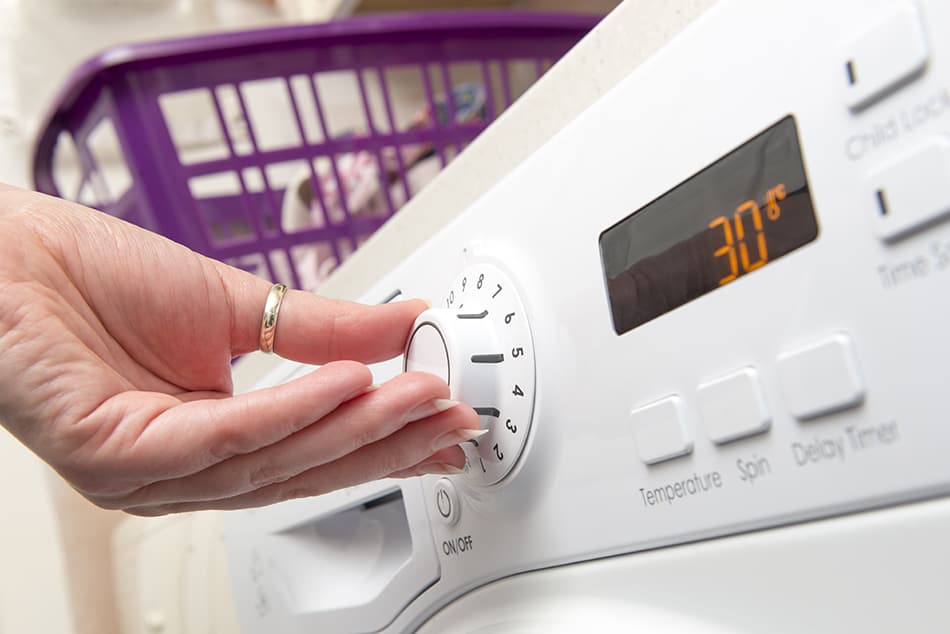
As we have learned, a laundry washing machine accounts forone percentof your overall household energy consumption. However, the laundry dryer accounts for theentire 4 percentof used power – as much as the refrigerator, stove, laundry washer, and dishwasher combined. And unlike the washing machine – it is not always a necessity.
- Do not use the dryer if you don’t have to. If you have the possibility of drying the laundry outside, air-dry your clothes whenever the weather allows it.
- Use ahigh-speed spin cycle inthe washer. While this contradicts the recommendation for washer energy saving, it is still more efficient to use a high spin cycle if you are using a dryer, since it will take less heat to dry the laundry where water has already been squeezed out.
- Clean thelint filter.Once a month, use an old toothbrush to scrub the filter and remove the film that may reduce air circulation.
- Add a new load while thedryer is still warm fromthe previous one. The remaining heat will be used by the dryer for the new cycle and it will spend less energy on heating up.
- Use wool or rubberdryer balls whichwill help get more air into the clothes by mechanically separating them, thereby shortening the drying time. Also, wool additionally absorbs moisture.
- UseEnergy Star certified dryers, which use 20% less energy than the non-certified models.
Cooking Stove
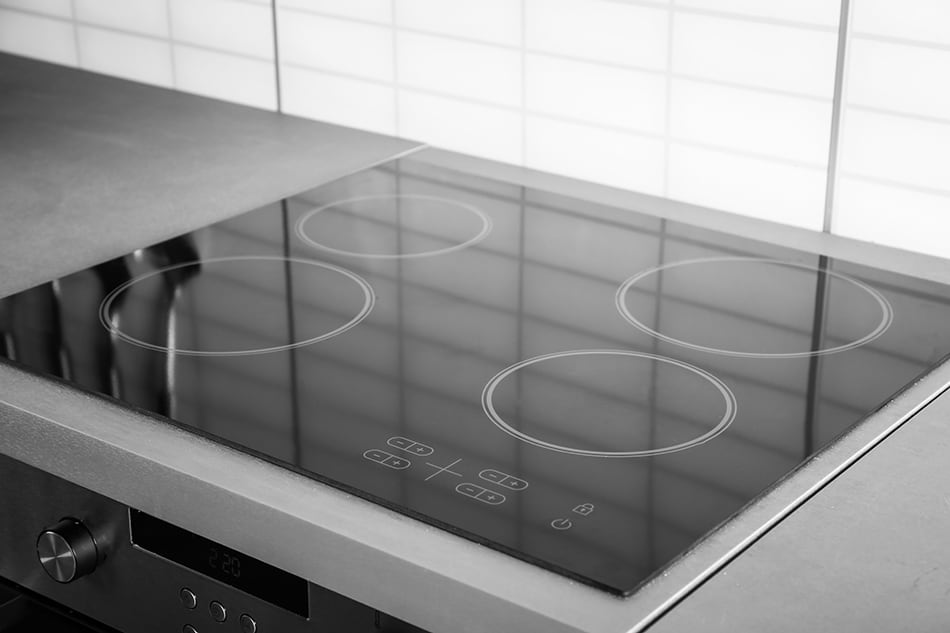
- Check theenergy efficiency ofyour stove. Look for theEnergy Star certificateor a comparable rating system. However, thesmart useof your stove can compensate for a less efficient appliance.
- Consider usingenergy-efficient water boilers or thermo-pots insteadof boiling water on the stove.
- Always use theright-size pot fora certain stove – it should fit precisely or have a diameter a bit bigger than the diameter of the stove – never the other way around.
- Using apressure-cookerdecreases cooking time, and therefore energy use.
You will find more cooking-related advice in ourEnergy-Efficient Kitchen section.
Refrigerators and Freezers
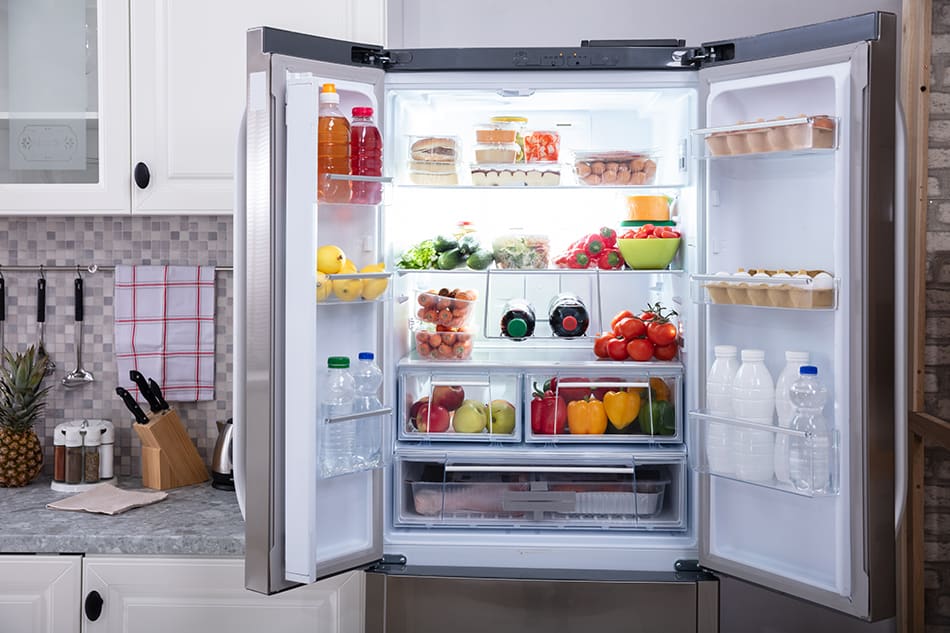
The energy efficiency ratingfor refrigerators and freezers is especially important since these appliances are working non-stop.
- Check theenergy efficiency ofyour refrigerator and freezer. Look for the Energy Star certificate and know that appliances produced before the1990scan be real energy hogs.
- When the weather is hot, open your freezer and refrigeratoronly briefly.
- Keep your freezer alwaysfull. Freezers that are half-empty use much more energy than well-stocked freezers.
Water Heaters
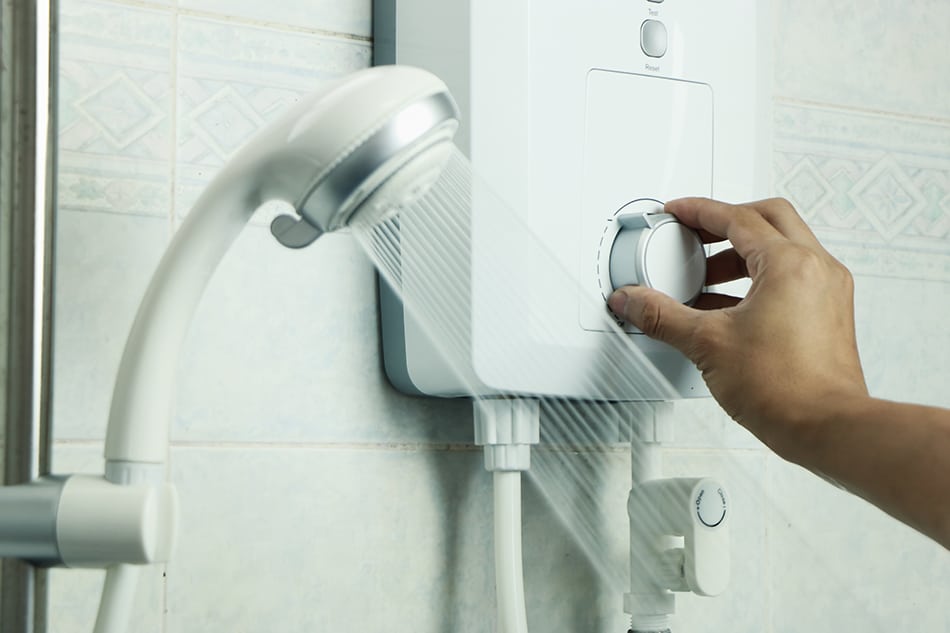
Water heatingaccounts for an impressive12-18 percentof your household energy use. That is why it is worth investing in an energy-savingwater heater.
- The first and simplest thing you can do is tolower the water heating temperature. Unless you have compromised immunity or a dishwasher that doesn’t have its own water heater (in which case you need the water to be hot), you can lower the temperature from standard140F (60 degrees C)to120F (49 degrees C).
- Insulating hotwater pipes and water heater tanks is also a great energy-saving upgrade.
- Drain-water heat recoveryis a superb patent that draws the heat out of your drain water and returns it to the hot water tank.
- If you are getting a new heater, consider itsenergy rating andget an appropriately-sized tank for your household so you don’t have to overwork it.
- If you are lucky enough to be able to usegeothermal energy, consider installing aheat pump water heater.
- Where applicable, consider installing asolar water heater.
Windows

Unlike appliances, windows, and doors do not use power, however, they are the key factor in keeping your home well insulated. About25-30percent of heating and cooling energy is lost through doors and windows!That means that having good windows and doors is a great way to save some energy.
- Thetypeof windowsis crucial – air-tight, well-insulated windows are what you need.
- If you have old windows, you don’t need to think about getting rid of them right away –refurbished old windowscan be surprisingly airtight, and simply fixing them can have agreat impact on insulation.
- Get insulating window shades– cellular “honeycomb” shades that can be raised or lowered are ideal.
- Window attachments also have their energy rating, so it could be worth paying attention to it.
- Install storm windows, or fix and weather-proof the existing ones. Install weatherstripping on all their joints. Depending on your windows, the storm windows cansave you 12%–33% on heating and cooling costs.
- Modern types of glass can deflect the sun’s heat. It is calleda solar control glass. If you are planning on new windows, ask about this option.
- Shades, drapes, and/or blinds area must so you can control the amount of sun (and consequently heat that enters your home). This is not important for North-facing windows, but it is for all others, and especially the South-facing ones. Awnings can also help reduce heat from south- and west-facing windows.
Extra: Room-Specific Energy-Saving Tips For Your Home
A key to energy efficiency is not only making good “Energy Star” consumer choices but also adjustingour own behavior.
I hope that this part of the guide will help you identify some of the habits that lead to a waste of energy – and help you deal with them.
To make it more systematic, I am going to address the energy-saving issues ofeach roomof an average household.
The Energy- Efficient Kitchen
Due to the extensive use of heating and cooling appliances, kitchens are a place when a lot of energy can be wasted – but it also means that a lot can be saved, usually just by changing your habits.
Cooking
- If you are not aware of the need to save energy, you may accidentally waste plenty of power out of simpleforgetfulness. Always remember toturn off your stove in time, or for example, if you are boiling water, turn it off as soon as the first bubbles appear.
- Pay attention to the temperatures on your stove and in your ovens – always work with the lowesttemperatures possible.
- Usingpressure cookers willsave you both the time and the energy when preparing slow-cooking meals such as soups or cooked beans.Plan mealsso you can make them in the pressure cooker.
- If you are baking a few dishes (e.g., lunch and a cake), always prepare them so you canput one after the other inthe oven, with no lag or pause between.
- During the hottest weather, consider preparingcool meals such西班牙涼菜湯;另外,有很多no-bake cakes ideal for the summer heat. This way you are saving power, and reducing the need for AC cooling.
Cooling and Storage
- Plan your supplies so you can keep your freezeralways full– as we mentioned previously, half-empty freezers use much more energy than full freezers.
- To avoid keeping your refrigerator open for a prolonged time – especially during hot weather –avoid browsing or looking aroundthe fridge. Know what you need beforehand and make a list of the groceries in the fridge if needed.
- Check periodically if refrigerator or freezerdoors are properly closed– especially if you numerous families with children and/or seniors.
The Energy-Efficient Bathroom
- Showeringinstead of filling a bathtub whenever you can. This saves both water and the energy required to heat it. This is especially true forwintertimewhen the water in the tub will get cold quickly, plus you will probably require additional heating of the bathroom space.
- If you are addicted to showering with hot water – try to ditch the habit. Besides saving energy,showering with lukewarm water is對你更健康——特別是你的血液vessels.
- Don’t let the water run when you are brushing teeth – and especially not warm water.
The Energy Efficient Living Room
- Be mindful ofambient lightsand install power-savingLED bulbs and dimmers, if possible.
- Useenergy-saving power stripswherever you can (and not only in the living room). The energy-saving features and standby modes can detect wattage and switch off the entire strip when the plugged-in appliances go into a standby mode.
- The same advice applies to the bedroom.
The Energy-Efficient Children’s Room
- Theadvice for the living room applieshere as well, with a few extras.
- Kids tend to be forgetful, so pay attention to their use ofdevices.
- Teach them to be mindful of how much theychargetheir tablets and phones and warn them not to leave the chargers in the eclectic sockets when they are turning off. This is not just a matter of saving energy, but ofsafety– freak accidents like device explosions while charging or chargers catching on fire are rare but have happened before.
- Teach them that instead of just unplugging the device, theyunplugthe charger first.
- Warn them not to leave theircomputers or TV setson at night. Don’t expect too much – instead, check periodically if everything is off.
The Energy-Efficient Entrance hall and hallways
- Hallways and entrance halls are always susceptible to increased air circulation and can be places where a lot of warmth is being lost through thedraft.
- Good insulationof doors and windows in these parts of your home is critical to prevent wasting energy.
The Energy-Efficient Garden
In your garden, there are also potential energy-wasters – water pumps, lawn sprayers, and garden lights.
- Swamp the regular electric garden lamps forsolar lamps, which are cheap and easily available.
- Alternatively, you caninstall timerson your existing electric lights. That way you won’t leave them on by accident throughout the night.
- 安裝燈,甚至是一個運動傳感器better option, as they will be exclusively on when someone is in the garden.
- Timers are also excellent solutions forsprinklersandirrigation pumps– it is better for your plants too to have regular watering at a suitable time of the day.
To Take Away
Although it takes some initial spending, by saving energy, you are saving our planet and resources – and also your home budget.
However, it is also important to change ourhabits,rather than just secure the funds for energy-efficient upgrades. In fact, your habits can nullify much of your effort made through upgrades. That is why it is just as important to notice and change our behavioral patterns which lead to being wasteful instead of mindful about energy use.
I hope our energy-saving guide has been helpful to you. What is the single greatest change you’ve done to curb your energy footprint? Let us know in the comments!
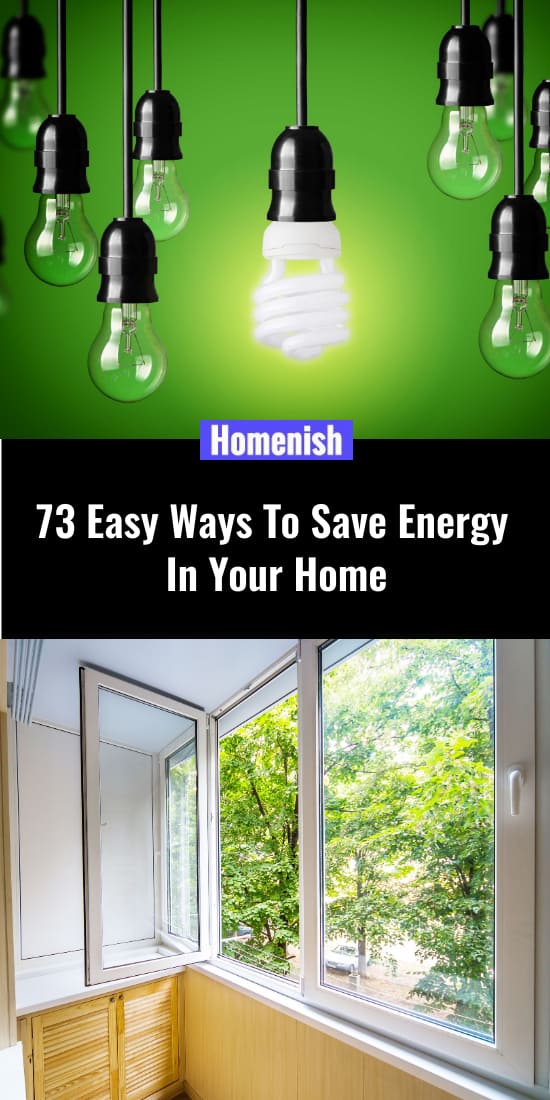
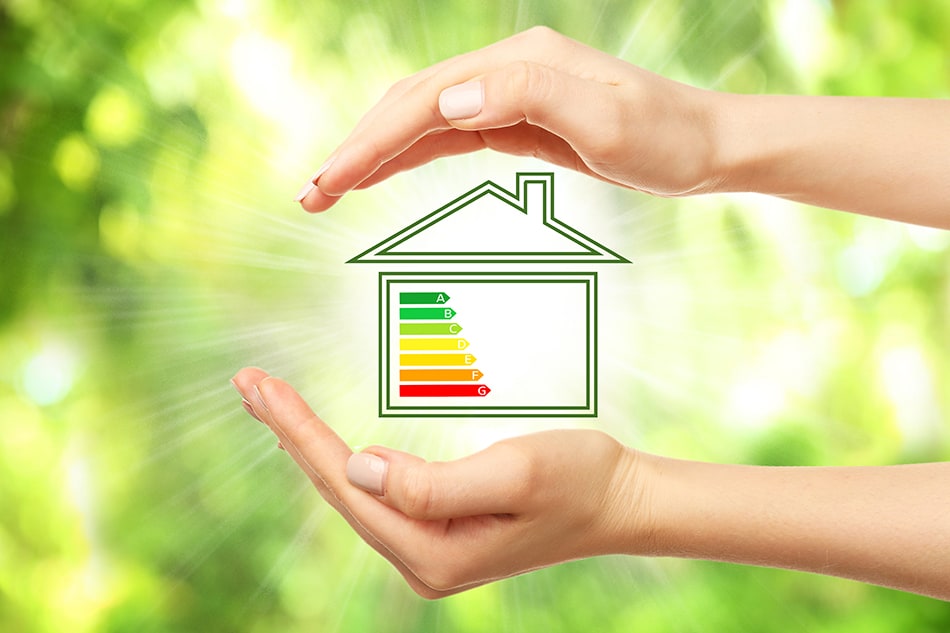
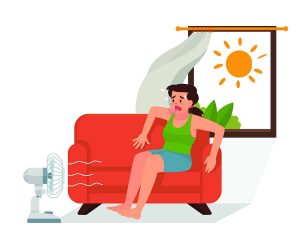


Leave a Reply